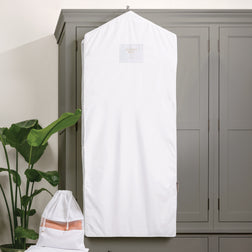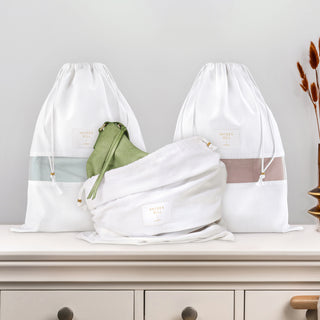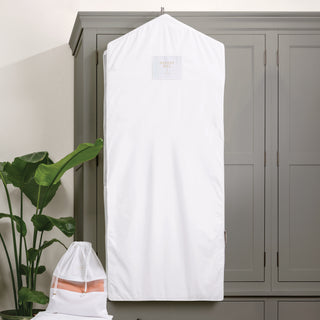Cashmere is one of the most popular and sought after fabrics on the market, but have you ever asked yourself why? Read our article to find out more about this fabric and it's real value.
Cashmere is one of the most popular and sought after fabrics on the market, but have you ever asked yourself why?
Learning how cashmere came to be associated with luxury can deepen your appreciation for your own cashmere garments and help you know what to look for when purchasing new ones.
Many factors impact the quality and the price of cashmere wool, so it's important to understand what goes into making a superior product in order to be able to identify pieces that are of the highest quality.
Caring for cashmere requires effort, but the extra attention is worth it to protect the value and quality of your investment pieces.
Historical Origins of Cashmere Wool
The earliest uses of cashmere wool can be traced back to the Kashmir Valley, a stretch of land nestled between the Pir Panjal Range and the Himalayas. While textual references to shawls made of cashmere wool appear as far back as the 3rd century BC, history dates the use of cashmere as a common textile for many different types of clothing beginning somewhere in the 14th century AD.
Although many different breeds of goat have a downy undercoat that can be spun into wool, true cashmere wool comes from a particularly fine-haired breed known as Capra aegagrus hircus, or the Hircus Blythi Goat. They may also be referred to by their Persian and Urdu-inspired name, pashmina goats. Cashmere wool may also be sold as pashmina wool since the terms are considered interchangeable in many regions.
Today, this breed of goat can be found in a variety of regions across the globe. Many believe that the unique climate and terrain of the Kashmir Valley and surrounding areas of Nepal and Mongolia result in a finer, softer down coat. Cashmere wool that originates from this area of the world is often considered the best for making clothes like sweaters, shawls, and soft, sturdy thermal pieces like hats and gloves.
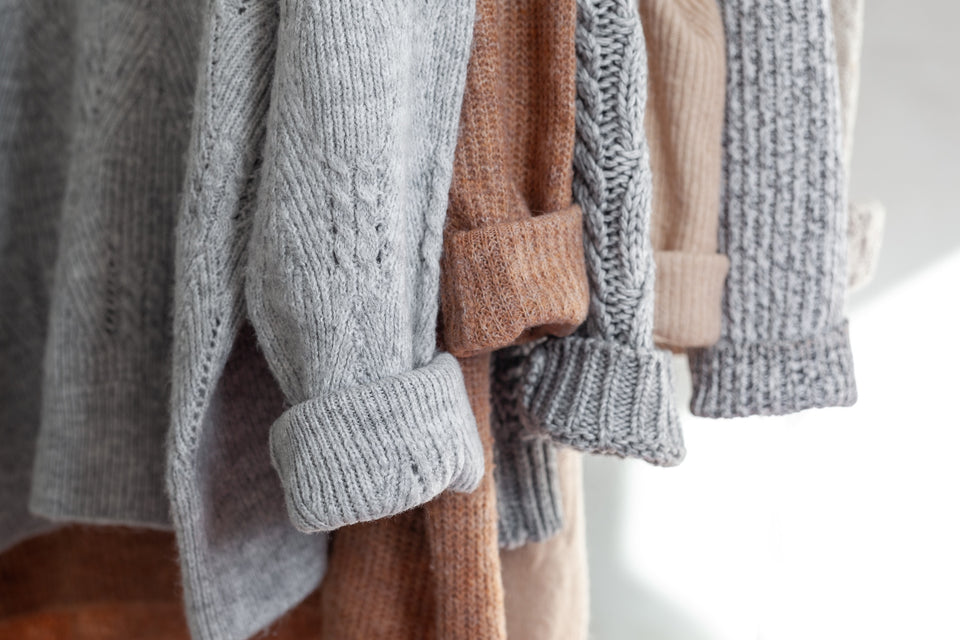
The Process of Manufacturing Cashmere Wool
Gathering
The process for gathering wool from the pashmina goat is time-sensitive and tedious. During the winter, goats grow a double fleece with a downy undercoat and coarser guard hairs that help insulate them against cold temperatures. When spring arrives, they begin to molt, or shed, this fleece. For goats in the Northern Hemisphere, this can begin as early as March, but it can be as late as May before the undercoat is ready to shed.
The most superior method for gathering wool is the traditional approach of hand-combing the fleece to release both the down and guard hairs. Hand-combing a goat can take as long as two weeks. Guard hairs must be removed from the collected down so that the yarn that's spun from the wool is as soft and supple as possible.
Shearing the goats is faster, but it can produce a coarser yarn due to the higher ratio of guard hair to down in the final product. But this yarn is still valuable on the market because the garments it produces are still lightweight to wear and well-insulating in cold temperatures.
Refining
Before it can be dyed, spun, and woven into garments, cashmere wool must be cleaned. This removes the remnants of dirt, debris, and excess animal oils. At this point in the manufacturing process, it's common for industrial machines to clean the wool rather than washing, dyeing, and carding by hand.

Once the raw fibres are clean, they're often dyed in large batches. The fluffy clumps of dyed, raw cashmere wool go through a multi-step process that webs it together into thin, flossy sheets that are turned into spools of yarn-like fibres. This intermediate stage is referred to as slubbing. To the untrained eye, it looks like finished yarn, but in actuality, its fibres are weakly bonded and can be easily pulled apart.
Spinning
The process speeds up at this point with the use of spinning mules that are able to handle multiple spools of cashmere slubbing at once. These mules rapidly turn out yarn of varying thicknesses that are wound onto cones for a final quality check. The final product is cashmere wool yarn that is ready for weaving into a multitude of luxury items.
Many of the cashmere items for sale in stores, even in boutiques, are made on industrial looms. Scarves and shawls are still frequently made by hand and are therefore coveted for their unique character and intricate designs. Items like sweaters, jackets, and small pieces such as hats, socks, and gloves are easier to produce in larger quantities using modern machinery rather than hand weaving.
The Fashionable Rise of Luxury Cashmere Garments
The beauty and utility of cashmere clothing had made it very fashionable in the East, and in the 18th century, the explosion of commercial trading routes between Asia and Europe opened up new opportunities for cashmere to be made and sold as a luxury textile in the West. As with many fashion-forward movements of the time, cashmere first became popular with the French aristocracy.
At first, French wool manufacturer William-Louis Ternaux merely tried to imitate Indian cashmere shawls by making them out of cheaper and more accessible merino wool from Spain. But then, with the help of the French government, Ternaux traveled to Persia to acquire a herd of pashmina goats to bring back to France. This was the first step to cashmere wool becoming a popular and pricey textile throughout Europe and eventually North America.
In fact, European wool manufacturers introduced practices that make producing and dyeing cashmere in new and exciting hues possible to this day. Now, production quality in places like Italy and Scotland are heralded as top-of-the-line.
Cashmere remains a staple of modern fashion trends, and although many garments made from cashmere wool are lightweight enough to be worn all year round in many regions, it still tends to be worn most during colder months.

And, though cashmere is featured in luxury collections and certain pieces carry an impressive price tag, cashmere is no longer reserved for the fashion elite.
But, not all cashmere is made equal. Pure cashmere and pieces made in small quantities cost more than cashmere blends made en masse.
Understanding the Cost of Cashmere
It’s clear that the environment, gathering practice, and weaving method of cashmere can determine the value of a piece of clothing. The more care that's taken in each step of the long process from raw to refined, the more justified it becomes to charge a premium for the result.
Most clothing retailers do not oversee the entire process from raw to refined themselves. Haute couture design houses may send their patterns to master weavers to fashion the pieces by hand. Others may handle design and production in-house. However, it's rare for one retailer to manage everything from goat to garment.
More commonly, the process looks something like this:
- goat herders send raw cashmere wool to dye houses
- dye houses spin cashmere slubbing into proper yarn
- the yarn is sold to textile manufacturers
- manufacturers produce commissioned designs for final sale
Any shortcuts or compromises made along the way can impact the quality and the cost of a garment.
That's why raw cashmere wool that's been hand-combed from goats in the Kashmir Valley, processed and prepared in European wool factories, and then handcrafted into beautiful haute couture designs by world-famous fashion houses are typically the most expensive. They're more than worth the investment and are destined to become heirloom pieces to be handed down from one generation to the next.
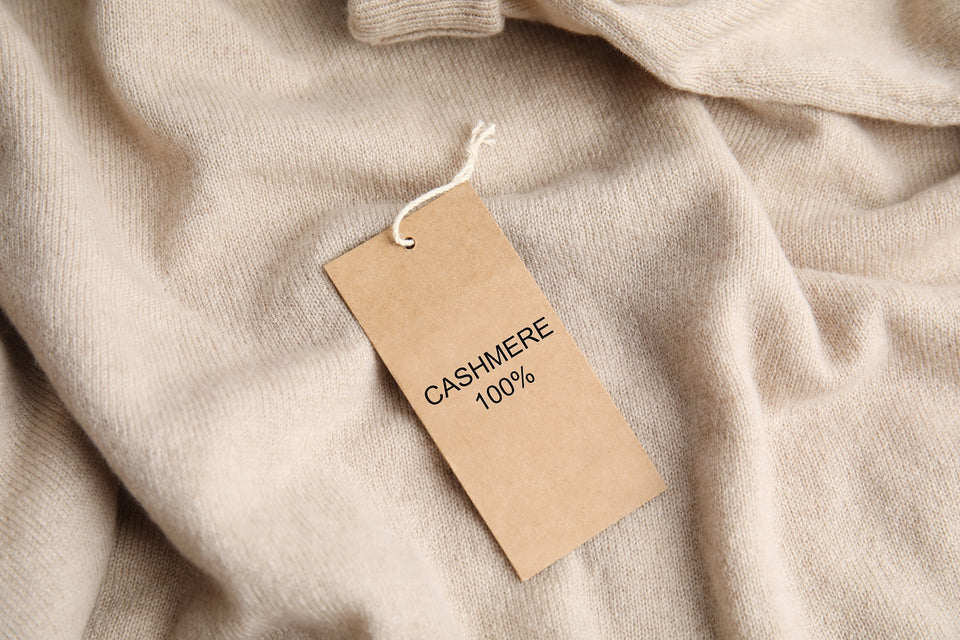
Finding a cashmere sweater at a bargain doesn't mean you're getting low quality, though. If you are looking for 100% pure cashmere wool, you can find it at affordable prices. The goats that produced the wool may have been raised in a different region, or the manufacturer may have produced large quantities of the same design rather than producing a small batch. None of these detract from the quality of the cashmere; they just lack some of the speciality that sets premium cashmere apart in the eyes of a purist.
It's important to know that there are no worldwide standards for establishing the purity of cashmere, so even if one retailer advertises it as 100% pure, it may not actually meet that definition according to regulations elsewhere. As an example, here's what the U.S. Wool Products Labelling Act of 1939 established as the standards for labelling clothing that contains cashmere:
- It must be wool from the de haired undercoat of the cashmere goat (the Capra hircus langier)
- The wool product cannot exceed 19 microns in diameter on average
- No more than 3% of the wool product, by weight, can measure more than 30 microns in diameter
However, standards like these are not easy for the average shopper to use while in a store considering the purchase of a cashmere garment. Fortunately, there are some clever tricks you can use to make an educated guess as to a cashmere item’s quality.
Determining the Quality of Cashmere
Touch
Cashmere is soft, sometimes unbelievably soft, but there is such a thing as too soft. Some manufacturers attempt to hide coarse fibers in a yarn by using additives that condition the yarn and give it a slick feel. The texture of high-quality cashmere should feel plush rather than slippery.
Colour
Cashmere wool is notoriously stubborn and dye-resistant. This doesn't mean that all pastel, muted cashmere clothes are inferior to richly saturated ones, but jewel-tone hues are often made at only the most skilled dye houses. The same is true of intricate patterns and detailed embroidery work. Each added feature means more time and effort went into making that piece of clothing, which is unlikely to occur with cheaper cashmere blends.
Thickness
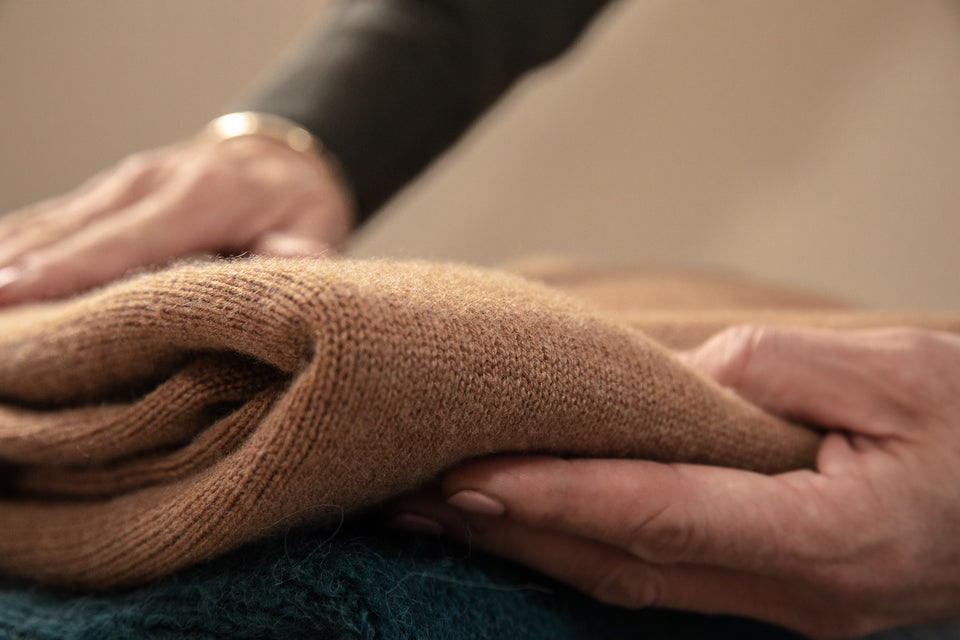
Some manufacturers promise pure cashmere for a bargain price, and then save on costs by producing a thin, loosely woven garment. A cashmere cardigan shouldn't be so thin as to look sheer, and the same goes for socks, which will break down quicker the thinner they are.
Sheen
Natural fibres like cashmere wool will have a sheen, but in the case of cashmere, it should still be rather muted. If the fabric is very reflective and shiny, there's a chance it's been woven with other types of textiles. This may be intentional as this can provide certain benefits like durability and elasticity, which is what allows some cashmere garments to be machine-washed instead of hand-washed or dry-cleaned. In these cases, the care label should specify it is a blend.
Origin
While the country of origin isn't always indicative of quality, it is important to consider. Mass-produced garments from China can vary greatly in terms of quality even when they're made with properly sourced cashmere wool. As the largest producer of raw cashmere, Chinese manufacturers have the ability to source some of the best cashmere wool for more affordable prices than manufacturers in other parts of the world. Overall, it is best to purchase from retailers you trust are sourcing their materials ethically and with an eye for quality.
Preserving the Value of a Cashmere Garment
If you have invested in high-quality cashmere pieces for your wardrobe, you want them to last a lifetime. Whether they will or not ultimately comes down to how you care for the cashmere and how you store it when not in use.
It’s critical to clean your items thoroughly in between wears and before you store them at the end of the season. Although many care labels will insist you dry-clean only, it is safe, and sometimes preferable, to hand-wash cashmere garments and allow them to air dry carefully. Using a wool-safe detergent will help you avoid stripping the fibers of any natural oils, plus prevent damage and fading dye. Follow our step-by-step guide for washing cashmere at home which also includes tips for removing stains and drying cashmere clothing without losing its shape.

When storing your cashmere items, we recommend Hayden Hill garment storage bags to preserve the beauty of your clothing. Our bags are made of organic, soft cotton with a sheer, organza side panel so you can see your pieces while keeping them protected from light, dust, and moths. Hayden Hill delivers sustainable and beautiful garment care to protect what you love.

